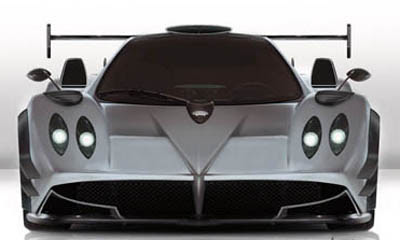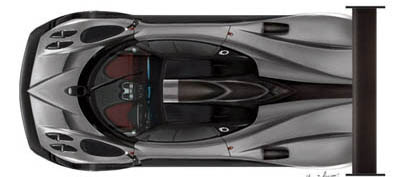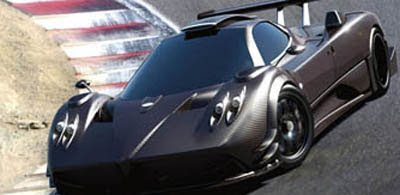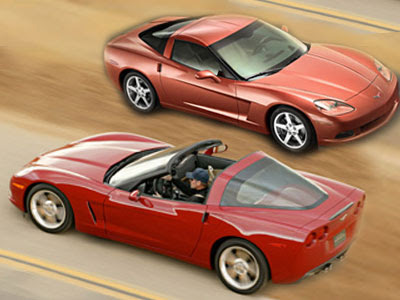Extreme car modification on ABT Contest
Find here the development of famous cars in the world. you can find the latest designs, models and matters relating to otomotivnya. how the car companies from different continents that have been known to produce and introduce their products
Performance Pagani Zonda R


While we certainly cannot say the Zonda F lacks performance figures, driving around the Nürburgring in 7:32 and achieving lateral G forces of almost 1.5 G, it is however a road car, easy to drive, intuitive and setting the benchmark for comfort, safety and lightweight. Paired with a quality finish and the attention to detail this made the Zonda F one of the most desirable supercars resulting in the 25 Coupé models being sold out in record time.
The Zonda R is born with full liberty. The target: the ultimate performance at the racetrack without any implications of rules, except for safety, where no compromise is allowed. In September 2006 the first drawings were ready, but it was crucial to have the support of Mercedes-AMG for a high revving engine with a power output of 750hp, dry sump, light and with a low centre of gravity. The basis was the self supporting engine of the mighty CLK GTR, which has dominated the GT championships.
Eve at constant racing pace the engine would have to cover over 5.000 km before servicing. The challenge has been accepted without hesitation.
The Zonda R is a car designed from scratch, with only 10% of the Zonda F components to be carried over. The suspension forged in Avional, a new Pagani six speed transversal sequential gearbox, carbon fibre monocoque, aeronautical four pump fuel tank are only part of the equation.
The wheelbase has grown by 47mm, the overall length by 394 mm and the track is increased by 50mm. The bodywork and aerodynamics have been studied to offer maximum downforce. Even though built for the track, the project would not have received kick off, if the quality and finish of the car and its details was not up to the level of the Pagani road cars. One of the first cars to be delivered however will be kept in a living room, designed by Pagani and built with the same materials as the Zonda F, beautifully textured carbon fibre, avional, titanium, inconel and other state of the art materials. Additionally it will feature a bespoke HiFi System that will allow the customer to listen to the sound of this car at Le Mans and the Nürburgring.
The Pagani customers who have ordered the Zonda R will be relieved of almost 1.2 million + taxes.

The Technical Specifications
This Zonda is purpose made for track use, without restrictions of any competition rules or homologation, with the only exclusion of the passengers' integrity, where no compromise is tolerated according to our philosophy and state-of-the-art safety measures are featured.
The chassis
The central carbon chassis will incorporate a roll cage and a rubber racing fuel tank with 4 fuel pumps and quick refuel filler like on GT race cars. The wheelbase has been increased by 47mm to offer the best stability. The front and rear subframes are brand-new, built to accommodate a new suspension geometry, produced in avional. The magnesium forged rims with central wheel nut and a quick pneumatic lifting system allows fast and effortless changes of the slick tyres.
Bodywork and aerodynamics
The new bodywork has been honed to offer elevated downforce even in low speed corners. The longer front bonnet with flaps, closed underbody and the rear overhang with the adjustablerear wing and race derived diffusor translate into shattering aerodynamic efficiency and will let you experience cornering speeds beyond imagination. The car displays and logs information about the amount of dowforce that the car is generating at each moment. Combined with the adjustable wings you can easily find the best setup for each track.
Workstation
The interior is designed to accommodate the driver and passenger in bespoke seats, built to offer the best support, when the G-forces from the vehicle dynamics come into question. The Digitek instrumentation provides the essential information and a sophisticated telemetry allows through a variety of sensors to monitor every single component of the car.
 Technical Data
Technical Data* Type V12 - M120
* V - angle 60°
* Displacement 5987 ccm
* Stroke 80,20 mm
* Bore 89,00 mm
* Valves per cilinder 4
* Horse Power 750
* Power output 551 KW at 7.500 1/min
* Torque output 710 Nm
* Aspiration Single throttle bodies, mechanically operated
* Lubrification Dry sump with separate oil tank
* Firing order 1-12-5-8-3-10-6-7-2-11-4-9
Performance Pagani Zonda R


While we certainly cannot say the Zonda F lacks performance figures, driving around the Nürburgring in 7:32 and achieving lateral G forces of almost 1.5 G, it is however a road car, easy to drive, intuitive and setting the benchmark for comfort, safety and lightweight. Paired with a quality finish and the attention to detail this made the Zonda F one of the most desirable supercars resulting in the 25 Coupé models being sold out in record time.
The Zonda R is born with full liberty. The target: the ultimate performance at the racetrack without any implications of rules, except for safety, where no compromise is allowed. In September 2006 the first drawings were ready, but it was crucial to have the support of Mercedes-AMG for a high revving engine with a power output of 750hp, dry sump, light and with a low centre of gravity. The basis was the self supporting engine of the mighty CLK GTR, which has dominated the GT championships.
Eve at constant racing pace the engine would have to cover over 5.000 km before servicing. The challenge has been accepted without hesitation.
The Zonda R is a car designed from scratch, with only 10% of the Zonda F components to be carried over. The suspension forged in Avional, a new Pagani six speed transversal sequential gearbox, carbon fibre monocoque, aeronautical four pump fuel tank are only part of the equation.
The wheelbase has grown by 47mm, the overall length by 394 mm and the track is increased by 50mm. The bodywork and aerodynamics have been studied to offer maximum downforce. Even though built for the track, the project would not have received kick off, if the quality and finish of the car and its details was not up to the level of the Pagani road cars. One of the first cars to be delivered however will be kept in a living room, designed by Pagani and built with the same materials as the Zonda F, beautifully textured carbon fibre, avional, titanium, inconel and other state of the art materials. Additionally it will feature a bespoke HiFi System that will allow the customer to listen to the sound of this car at Le Mans and the Nürburgring.
The Pagani customers who have ordered the Zonda R will be relieved of almost 1.2 million + taxes.

The Technical Specifications
This Zonda is purpose made for track use, without restrictions of any competition rules or homologation, with the only exclusion of the passengers' integrity, where no compromise is tolerated according to our philosophy and state-of-the-art safety measures are featured.
The chassis
The central carbon chassis will incorporate a roll cage and a rubber racing fuel tank with 4 fuel pumps and quick refuel filler like on GT race cars. The wheelbase has been increased by 47mm to offer the best stability. The front and rear subframes are brand-new, built to accommodate a new suspension geometry, produced in avional. The magnesium forged rims with central wheel nut and a quick pneumatic lifting system allows fast and effortless changes of the slick tyres.
Bodywork and aerodynamics
The new bodywork has been honed to offer elevated downforce even in low speed corners. The longer front bonnet with flaps, closed underbody and the rear overhang with the adjustablerear wing and race derived diffusor translate into shattering aerodynamic efficiency and will let you experience cornering speeds beyond imagination. The car displays and logs information about the amount of dowforce that the car is generating at each moment. Combined with the adjustable wings you can easily find the best setup for each track.
Workstation
The interior is designed to accommodate the driver and passenger in bespoke seats, built to offer the best support, when the G-forces from the vehicle dynamics come into question. The Digitek instrumentation provides the essential information and a sophisticated telemetry allows through a variety of sensors to monitor every single component of the car.
 Technical Data
Technical Data* Type V12 - M120
* V - angle 60°
* Displacement 5987 ccm
* Stroke 80,20 mm
* Bore 89,00 mm
* Valves per cilinder 4
* Horse Power 750
* Power output 551 KW at 7.500 1/min
* Torque output 710 Nm
* Aspiration Single throttle bodies, mechanically operated
* Lubrification Dry sump with separate oil tank
* Firing order 1-12-5-8-3-10-6-7-2-11-4-9
2010 Jaguar Cars XJ75 Platinum Concept Car Luxury Sports Salon

The new 2010 Jaguar XJ Luxury Sports Saloon Platinum Concept Car celebrates Jaguar's 75th Anniversary, and highlights the uniqueness of the XJ. Jaguar design team has created the Jaguar Luxury Sports Saloon XJ75 Platinum Concept, a one-of-a-kind design project on display at the 2010 Pebble Beach Concours D’Elegance Concept Car Lawn.

2010 Jaguar Cars XJ75 Platinum Concept Car Luxury Sports Salon
The XJ75 Platinum Concept Car is the company's first demonstration of the design customisation potential of the striking new XJ luxury salon, emphasising the Jaguar's dramatic interior and exterior styling themes. "The XJ Luxury Sports Saloon is thoroughly modern, and captures the innovative and daring character that our founder Sir William Lyons built into every Jaguar. And the design team clearly had some fun making their first one-of-a-kind XJ design concept car in that spirit."
The XJ75 Luxury Sports Saloon Platinum Concept centre console houses a bespoke clock developed and designed in partnership with the Bremont Watch Company.

An independent British company, Bremont creates beautifully engineered and designed mechanical watches hand assembled in Switzerland.

2010 Jaguar Cars XJ75 Platinum Concept Car Luxury Sports Salon
"From a pure design perspective, the XJ75 Luxury Sports Saloon Platinum Concept is foremost about emphasising the striking proportion and presence of the new XJ, with a distilled black and white theme, which conjures up the sense of precious platinum," said Jaguar XJ Chief Designer Giles Taylor. "At the same time, the pure sporting character of XJ is brought to the fore by keeping the car's clean graphic approach and further lowering its stance."
Dominated by striking white and black contrast precious metals platinum theme suggests, the Jaguar XJ75 Platinum Concept is a high-performance 470-hp supercharged engine 2011 Jaguar XJL with new ground-hugging front, rear and rocker panel is fitted.

Performance on the XJ75 Platinum Concept is derived from its 5.0-litre Supercharged direct-injection V8 with 470 horsepower and 424 lb.-ft of torque. Entertainment is provided by a 1,200-watt Bowers & Wilkins surround sound system with 20 speakers powered through 15 channels and state-of-the-art sound processing technology.

This XJ75 Platinum Concept Car was designed to both celebrate the marque’s past and acknowledge the increasingly personal nature of today’s luxury cars.
DeLorean DMC12 - Classic Car
In 1982 Delorean brought this futurist looking car stateside. The DMC-12 is one of a kind with monocoque fiberglass construction to which the iconic stainless steel panels were affixed. Under the bonnet is the numbers matching PRV fuel injected 2849cc V6 mated to a 5 speed manual transmission. Sports car handling is provided from the rack and pinion steering, independent double wishbone front suspension and multi-link rear suspension, and 4 wheel disc brakes. Inside is AC, power windows, power locks, power brakes, AM/FM radio, power mirrors and leather interior. There are an estimated 6,500 DMC-12s still known to be in existence this is your chance own this car today.With only 2,918 original miles on this car it is in great condition.
DeLorean DMC12 - Classic Car
In 1982 Delorean brought this futurist looking car stateside. The DMC-12 is one of a kind with monocoque fiberglass construction to which the iconic stainless steel panels were affixed. Under the bonnet is the numbers matching PRV fuel injected 2849cc V6 mated to a 5 speed manual transmission. Sports car handling is provided from the rack and pinion steering, independent double wishbone front suspension and multi-link rear suspension, and 4 wheel disc brakes. Inside is AC, power windows, power locks, power brakes, AM/FM radio, power mirrors and leather interior. There are an estimated 6,500 DMC-12s still known to be in existence this is your chance own this car today.With only 2,918 original miles on this car it is in great condition.
C6 Chevrolet Corvette A new LS2 Sport Car

C6 Chevrolet Corvette A new LS2
Dave Hill, chief engineer of the Corvette and vehicle line executive for GM Performance Cars.The C6 represents a comprehensive upgrade to the Corvette.The Corvette C6 was introduced in 2005 to replace the outgoing C5 (1997 - 2004) model.
Blends technical sophistication with expressive style The sixth generation Corvette. Five inches shorter than the C5, the C6 Corvette cuts a tighter, more taut profile – with virtually no loss of usable space. More than just visual, the new dimensions make the car more agile and “tossable,” with upgrades in handling, acceleration and braking. At 0.28 coefficient of drag, the C6 is the most aerodynamically efficient Corvette ever and has improved anti-lift characteristics that enable improved high-speed stability and confidence.

C6 Chevrolet Corvette A new LS2
A new LS2 6.0-liter small-block V-8 is the standard engine in the Corvette C6. It is based on GM’s new Gen IV small-block family of engines.
The LS2 raises the bar for standard performance in the Corvette, delivering estimated peak output levels of 400 horsepower and 400 lb.-ft. of torque. It is the largest, most powerful standard small-block engine ever offered in Corvette.
Modern Sports Car Pontiac Solstice Coupe

The making of a coupe
It is a modern sports car with classic lines. The roofline has a "fastback" shape with stylized "rails" that run from the front of the roof to the rear, culminating in a stylish and functional ducktail-style rear spoiler.
The coupe's roof is fixed aft of the B-pillars, with side windows and a rear liftglass for access to the cargo area. The roof panel is easily removed from the passenger compartment, and an optional soft roof cover stores in the cargo area.
The Engineering the design
Despite its dramatic new look, engineers made only minor structural changes to create the Pontiac Solstice coupe. The rear fenders and rear fascia are the same as those on the convertible. New taillight assemblies flow more smoothly into the tapered roofline.
The sleek lines of the new roof give the car a fresh appearance, only minimal changes were made to the body structure - it's a great example of building on an already solid foundation.

The Lightweight structure
The roof's structure was strengthened with additional support elements, including an aluminum roof bow attached with aluminum brackets. The bow and brackets are stiff, low in mass, a design feature that pervades the coupe's overall construction. The roof includes a lightweight sheet molding compound cover affixed to a rigid aluminum frame for additional lightweight support. A lightweight magnesium roof panel frame weighs just 31 pounds (14.2 kg) and can be removed by one person. The cover is also made of sheet molding compound.
The Interior additions
Much of the coupe's interior remains the same as that of the convertible. However, the area behind the seats was redesigned for easy access to the cargo area, and a storage tray was mounted directly behind the headrests.
Removing the folding-top mechanism made way for a new, flat cargo floor and several storage compartments. The cargo area's covered bins provide secure storage for smaller items. Cargo tie-down hooks help secure irregularly shaped items.
The sleek lines of the new roof give the car a fresh appearance, only minimal changes were made to the body structure - it's a great example of building on an already solid foundation.

The Lightweight structure
The roof's structure was strengthened with additional support elements, including an aluminum roof bow attached with aluminum brackets. The bow and brackets are stiff, low in mass, a design feature that pervades the coupe's overall construction. The roof includes a lightweight sheet molding compound cover affixed to a rigid aluminum frame for additional lightweight support. A lightweight magnesium roof panel frame weighs just 31 pounds (14.2 kg) and can be removed by one person. The cover is also made of sheet molding compound.
The Interior additions
Much of the coupe's interior remains the same as that of the convertible. However, the area behind the seats was redesigned for easy access to the cargo area, and a storage tray was mounted directly behind the headrests.
Removing the folding-top mechanism made way for a new, flat cargo floor and several storage compartments. The cargo area's covered bins provide secure storage for smaller items. Cargo tie-down hooks help secure irregularly shaped items.
Modern Sports Car Pontiac Solstice Coupe

The making of a coupe
It is a modern sports car with classic lines. The roofline has a "fastback" shape with stylized "rails" that run from the front of the roof to the rear, culminating in a stylish and functional ducktail-style rear spoiler.
The coupe's roof is fixed aft of the B-pillars, with side windows and a rear liftglass for access to the cargo area. The roof panel is easily removed from the passenger compartment, and an optional soft roof cover stores in the cargo area.
The Engineering the design
Despite its dramatic new look, engineers made only minor structural changes to create the Pontiac Solstice coupe. The rear fenders and rear fascia are the same as those on the convertible. New taillight assemblies flow more smoothly into the tapered roofline.
The sleek lines of the new roof give the car a fresh appearance, only minimal changes were made to the body structure - it's a great example of building on an already solid foundation.

The Lightweight structure
The roof's structure was strengthened with additional support elements, including an aluminum roof bow attached with aluminum brackets. The bow and brackets are stiff, low in mass, a design feature that pervades the coupe's overall construction. The roof includes a lightweight sheet molding compound cover affixed to a rigid aluminum frame for additional lightweight support. A lightweight magnesium roof panel frame weighs just 31 pounds (14.2 kg) and can be removed by one person. The cover is also made of sheet molding compound.
The Interior additions
Much of the coupe's interior remains the same as that of the convertible. However, the area behind the seats was redesigned for easy access to the cargo area, and a storage tray was mounted directly behind the headrests.
Removing the folding-top mechanism made way for a new, flat cargo floor and several storage compartments. The cargo area's covered bins provide secure storage for smaller items. Cargo tie-down hooks help secure irregularly shaped items.
The sleek lines of the new roof give the car a fresh appearance, only minimal changes were made to the body structure - it's a great example of building on an already solid foundation.

The Lightweight structure
The roof's structure was strengthened with additional support elements, including an aluminum roof bow attached with aluminum brackets. The bow and brackets are stiff, low in mass, a design feature that pervades the coupe's overall construction. The roof includes a lightweight sheet molding compound cover affixed to a rigid aluminum frame for additional lightweight support. A lightweight magnesium roof panel frame weighs just 31 pounds (14.2 kg) and can be removed by one person. The cover is also made of sheet molding compound.
The Interior additions
Much of the coupe's interior remains the same as that of the convertible. However, the area behind the seats was redesigned for easy access to the cargo area, and a storage tray was mounted directly behind the headrests.
Removing the folding-top mechanism made way for a new, flat cargo floor and several storage compartments. The cargo area's covered bins provide secure storage for smaller items. Cargo tie-down hooks help secure irregularly shaped items.
2012 Morgan Sports Cars EvaGT
Morgan was one of the first car companies to see the advantage of a bonded aluminium chassis to give rigidity but also to save weight. The 2012 Morgan Sport Car EvaGT uses a further developed version of the bonded aluminium chassis of the Morgan Aero SuperSports, a chassis that successfully competes in International GT3 Sports Car Racing. Compliant with European and US safety approvals.

2012 Morgan Sports Cars EvaGT
The Morgan Motor Company has been making new cars all along. Morgan used the unveiling of the EvaGT sports car to again commit to releasing a brand new model every two years, with new niche markets in mind. It says the EvaGT is a four-seater coupe with a bit of “automotive theatre” aimed at young sporting families, while it also has plans for “a fun weekend vehicle” and, most intriguingly, an “electric sports car”.
The Morgan Motor Company is the last survivor of these British sports car manufacturers. Morgan sports car has a history of successful collaborations with German suppliers BMW, Siemens and Bosch. But Morgan also works with a number of young engineering companies in the United Kingdom and with world class British university research departments.

2012 Morgan Sports Cars EvaGT
The Pebble Beach Concours d’Elegance is one of the most prestigious automotive events of the year, and is drawing the attention of more and more high-end manufacturers. Count Morgan among them, as the company has just debuted the stunning Morgan EvaGT 2+2.
The Morgan Motor Company is in a good position to respond to this challenge because the company is small and flexible with a proven track record of fast development cycles. It currently manufactures one of the greenest sports cars in the world, the Morgan Four Four Sport. Morgan sports cars achieves this result with the use of the new Ford 1.6 Sigma engine coupled with a light chassis. Morgan currently has a young well qualified technical team working towards a potential 5 engineering PHD's, who will make full use of research departments at the University of Oxford, Cranfield and Birmingham City to tap into a technical knowledge network to make more efficient cars. This team is helping to develop a high torque electric motor twice as powerful as others of the same weight and size and a powerful lithium phosphate battery with a higher charge density to achieve the most efficient performance for weight so far.

The turbocharged, 3.0-liter inline-six from the BMW 335i sits under the sculpted hood and produces a healthy 306 horsepower and 295 pound-feet of torque. Power is transmitted to the rear wheels by either a six-speed automatic or six-speed manual. Morgan sports cars expects a scamper to 62 miles per hour to take 4.5 seconds and a top speed of 170 miles per hour. With its top speed at 170mph, Morgan sports cars Eva GT returns an impressive fuel economy of 40mpg UK, equals to 7.0lt/100km and 33.3mpg US, and has CO2 emissions of 200g/km.

The first public view of the 2012 Morgan sports cars EvaGT will be at the 60th Pebble Beach Concours d'Elegance, California, USA on the 15th August 2010. The Morgan Motor Company will be taking orders worldwide with a request for a deposit of £5000 from prospective clients for an allocated build slot. The first 100 cars of a limited run are planned to begin production mid 2012 and the "on-road" price will be competitive for a car of this class.
Subscribe to:
Comments (Atom)
 Print this page
Print this page
















